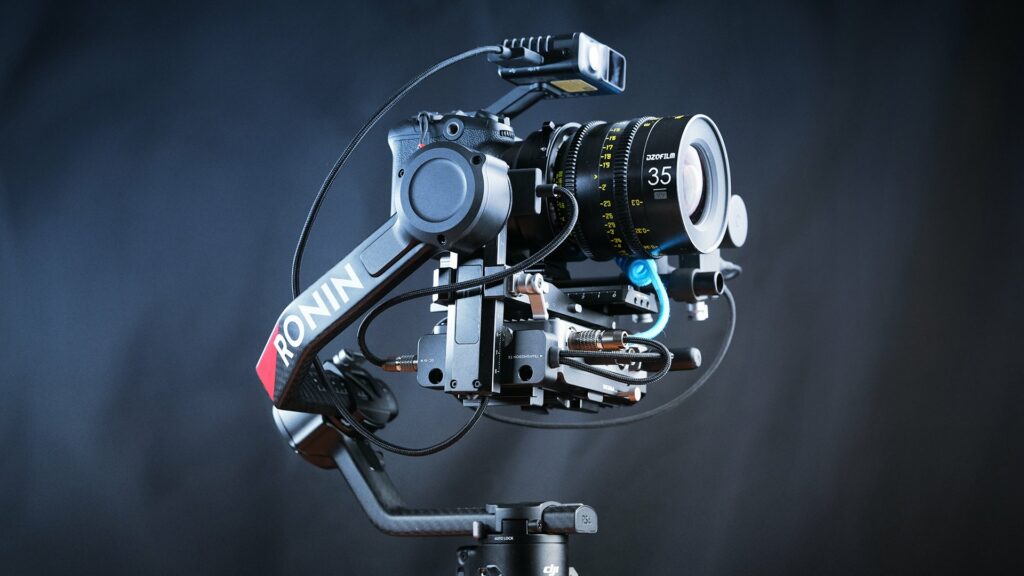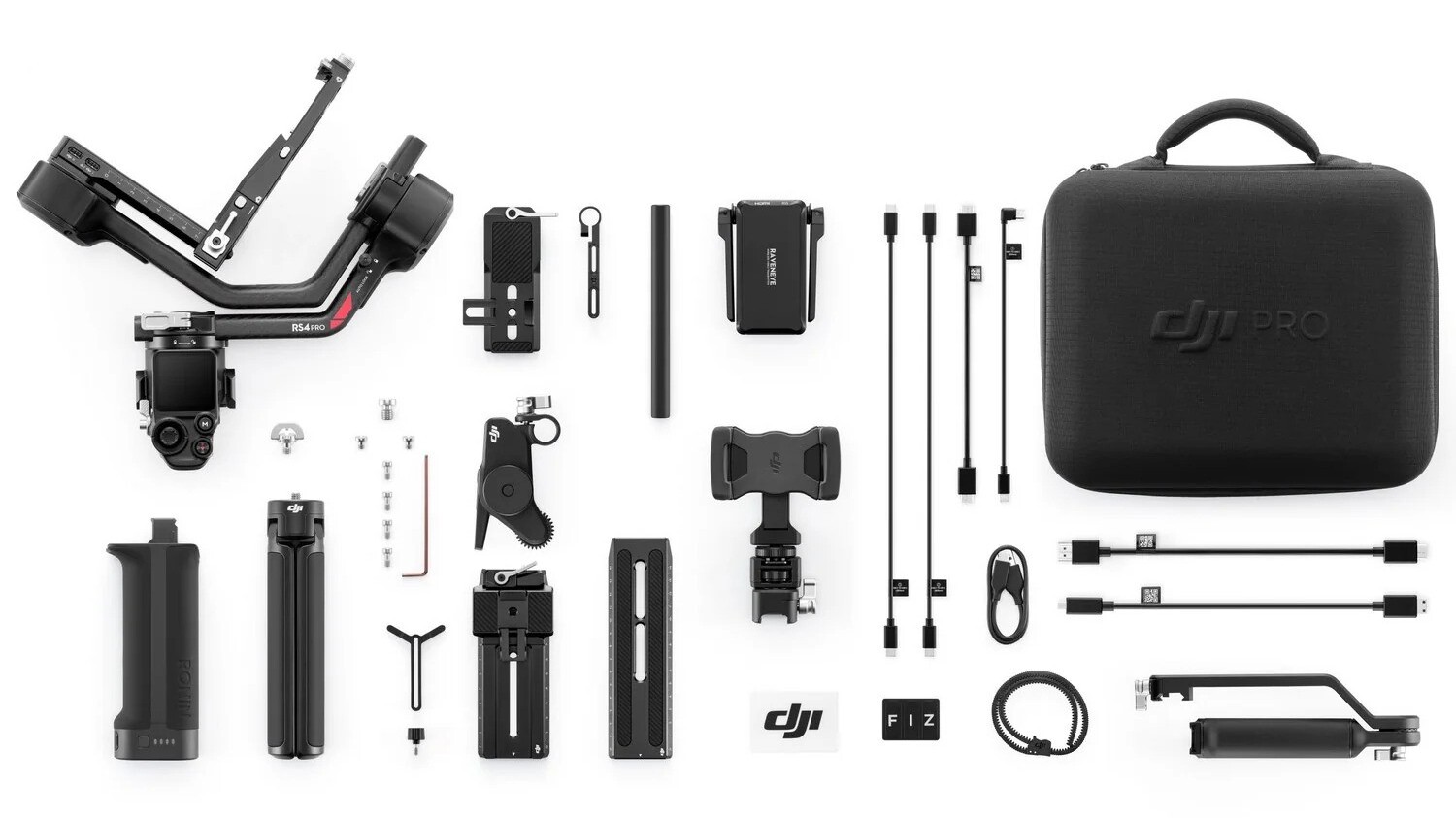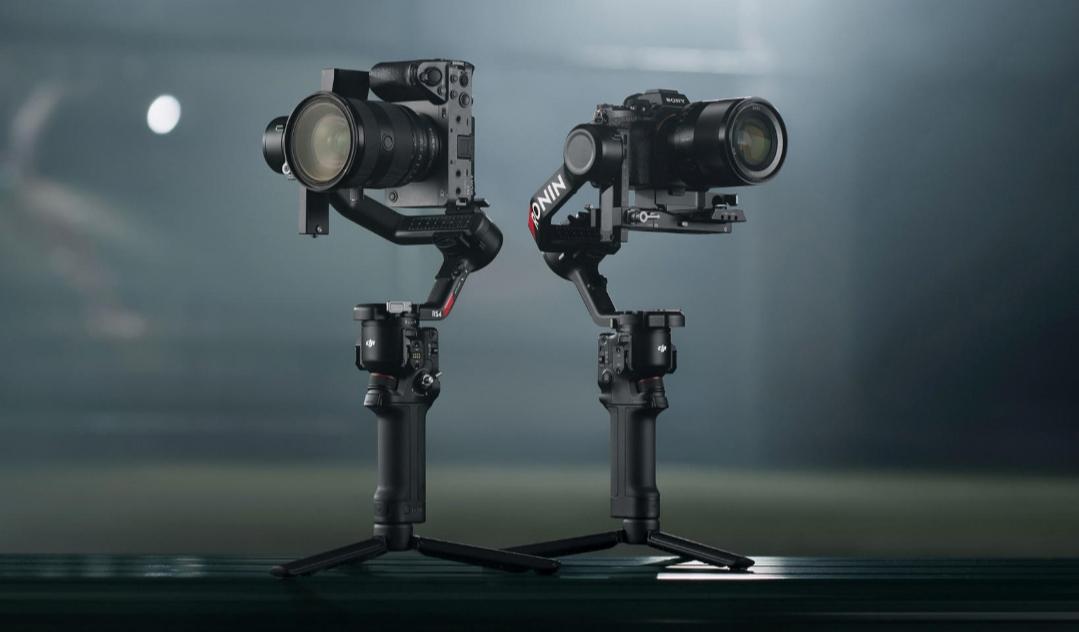When DJI calls something “Pro”, expectations sky‑rocket. The DJI RS 4 Pro is the company’s latest heavy‑lift, three‑axis stabiliser, rated for 4.5 kg / 10 lb payloads and boasting 20 % more motor torque than the RS 3 Pro. I’ve spent the past month filming commercial B‑roll, run‑and‑gun travel pieces, and a short documentary with it. In this DJI RS 4 Pro review 2025 I’ll cover setup, new features such as native vertical shooting and LiDAR focus, and—most importantly—how it feels on a long shoot day.

What’s New vs RS 3 Pro?
- Motor torque + 20 % for quicker starts and stiffer control 1
- Teflon‑coated axis arms for smoother balancing 2
- Longer tilt‑axis arm & adjustable placement guide—easier with matte boxes 3
- Second‑gen native vertical plate; flip to vertical in <10 s, no extra bracket 4
- LiDAR autofocus* & Focus Pro ecosystem support 5
*LiDAR sensor sold in “Combo” kit.
Build & Ergonomics
The RS 4 Pro’s carbon‑fibre arms keep weight to just 1.6 kg (3.5 lb)—barely 100 g heavier than its predecessor. Grip texture is unchanged, which suits me: it’s tacky without shredding gloves. Axis locks are now truly automated; power up and each axis snaps free in sequence, shaving seconds off every lens swap.

Balancing & Payload Reality Check
DJI rates the gimbal for a 4.5 kg / 10 lb rig. 6 My heaviest setup—a Panasonic S5 IIX, Sigma 24‑70 f/2.8, Tilta follow‑focus and V‑mount plate—came in at 4.3 kg. The RS 4 Pro handled it, but I needed the extended tilt‑arm at full length. Teflon‑coated rails glide nicely; micro‑adjustments are less jerky than on aluminium rails.
Performance in the Field
Stabilisation
Pans and tilts felt identical to the RS 3 Pro—already best‑in‑class—but I noticed fewer “micro‑jitters” when sprinting with 135 mm glass. That extra torque matters.
Native Vertical Shooting
Vertical‑first delivery is here to stay. Flipping the new horizontal plate takes two levers and about eight seconds—no Allen keys, no rebalance. The gimbal stays shockingly close to balance; I only nudged tilt by 2 mm.
LiDAR Focus & Ecosystem
Pairing the Ronin Image Transmitter and Focus Pro motor gave me subject‑tracking autofocus on manual lenses. The system ranges out to 20 m; focus pulls were repeatable and silent. For solo operators, it’s a game‑changer.
Battery Life & Accessories

The standard BG30 battery grip is unchanged: up to 12 h with a mirrorless body. DJI’s new PowerPlus grip (optional) pushes that to 18 h but adds 310 g.
- Briefcase Handle v2: folds smaller, now Arca‑Swiss compatible.
- Transmission Integration: RS 4 Pro talks directly to DJI Transmission for zero‑lag monitoring.
Pros & Cons
Pros
- Class‑leading 4.5 kg payload with higher torque headroom
- Instant axis locks & native vertical plate save time
- LiDAR focus + Transmission = true one‑man‑band rig
- Smoother balancing thanks to Teflon‑coated arms
Cons
- Still pricey once you add LiDAR & extra grips
- 1.6 kg base weight strains arm on long takes
- No major jump in raw stabilisation versus RS 3 Pro—incremental
Who Should Upgrade?
If you already own an RS 3 Pro and rarely exceed 3.5 kg, stick tight. However, filmmakers pushing heavier cinema glass, or needing lightning‑fast vertical switching, will appreciate the RS 4 Pro. New buyers should jump straight to it; the workflow perks alone justify the price difference.
Final Verdict
The DJI RS 4 Pro isn’t a revolution—it’s a refinement. Yet those refinements cut friction every single shooting day. For me, that translates to more creative takes and fewer gobbled minutes on set. If your work lives at the intersection of speed and heavy rigs, the RS 4 Pro is the gimbal to beat in 2025.
Check out the DJI RS 4 Pro on Amazon
Related Guides & Reviews:
- Best DSLR & Mirrorless Gimbals 2025
- Top Gimbals 2025: My Best Picks for Every Type of Creator
- Best Compact Gimbals 2025
- Insta360 Flow 2 Pro Review 2025

